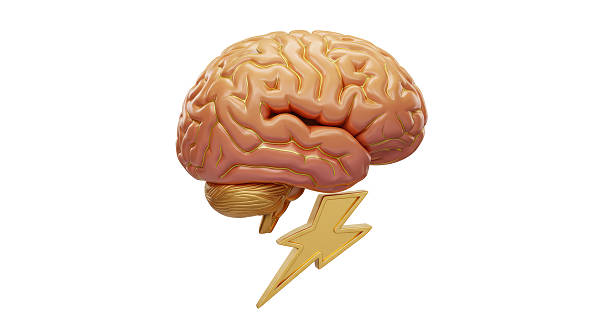
Ten Brain Exercises
Below is a detailed overview of ten brain exercises which are designed to improve memory. They are drawn from scientifically supported methods and practical activities. These exercises engage various cognitive functions, such as attention, working memory, and neuroplasticity, to enhance memory retention and recall. Each exercise includes a description, how it helps, and practical steps to implement it.
1. Memory Games (e.g., Matching or Recall Games)

Description: Memory games like card-matching (e.g., Concentration) or apps like Lumosity challenge your ability to recall patterns, images, or sequences.
How It Helps: These games strengthen working memory and short-term recall. It requires you to hold and retrieve information quickly. They also enhance concentration and visual memory.
How to Do It:
Play a physical card-matching game: Lay out pairs of cards face-down and try to match them by remembering their positions.
Use apps like Lumosity or BrainHQ for digital memory challenges (e.g., recalling sequences of shapes or numbers).
Spend 10–15 minutes daily, increasing difficulty as you improve.
Example: Match 10 pairs of cards in under 2 minutes, then try 15 pairs.
2. Meditation and Mindfulness Practice

Description: Mindfulness meditation involves focusing on the present moment, such as your breath or a specific object, to train attention and awareness.
How It Helps: Meditation enhances working memory and reduces stress, which can impair memory. Studies, like one from UCLA (2015), show mindfulness improves gray matter density in the hippocampus, a key memory region.
How to Do It:
Sit comfortably in a quiet space.
Focus on your breath for 5–10 minutes, gently redirecting your mind when it wanders.
Use guided meditation apps like Headspace or Calm for structured sessions.
Practice daily, starting with 5 minutes and gradually increasing to 20 minutes.
3. Learning a New Skill (e.g., Language or Instrument)

Description: Learning a complex skill, such as a new language or musical instrument, engages multiple brain areas, including memory.
How It Helps: This stimulates neuroplasticity, creating new neural connections. A 2014 study in The Journal of Neuroscience found that learning a new language improves episodic memory and recall.
How to Do It:
Enroll in a language-learning app like Duolingo or Rosetta Stone, aiming for 15–30 minutes daily.
Take up an instrument with lessons (e.g., guitar via YouTube tutorials or apps like Yousician).
Practice vocabulary or chords daily, recalling them without prompts to strengthen memory.
Example: Learn 10 new words daily and recall them the next day without looking.
4. Mental Visualization and Association

Description: Create vivid mental images or associations to remember information, such as names, lists, or facts.
How It Helps: Visualization leverages the brain’s visual memory system, which is often stronger than verbal memory. Associating new information with familiar images enhances recall.
How to Do It:
To remember a list (e.g., groceries), visualize each item in a story or place (e.g., imagine a giant apple on your couch).
Use the “memory palace” technique: Assign items to locations in a familiar place (e.g., your house) and mentally walk through it.
Practice with a 10-item list, recalling it after 10 minutes, then after an hour.
Example: To remember “John, lawyer,” picture John in a courtroom holding a gavel.
5. Brain Teasers and Puzzles (e.g., Crosswords, Sudoku)

Description: Puzzles like crosswords, Sudoku, or logic games challenge cognitive skills and memory.
How It Helps: These activities improve working memory and problem-solving by requiring recall of facts or patterns. A 2019 study in International Journal of Geriatric Psychiatry linked puzzle-solving to better cognitive function in older adults.
How to Do It:
Solve a daily crossword or Sudoku puzzle (available in newspapers or apps like BrainHQ).
Start with easy puzzles and progress to harder ones.
Spend 15–20 minutes daily, tracking your speed and accuracy.
Example: Complete a medium-difficulty Sudoku in under 10 minutes.
6. Chunking and Rehearsal

Description: Break information into smaller “chunks” and rehearse them repeatedly to improve retention.
How It Helps: Chunking reduces cognitive load, making it easier to store information in long-term memory. Rehearsal strengthens neural pathways.
How to Do It:
To memorize a phone number, group digits (e.g., 123-456-7890 instead of 1234567890).
Practice recalling a list of 10 random words by grouping them into categories (e.g., animals, foods).
Rehearse the information aloud or write it down 3–5 times. Space your practice over hours or days.
Example: Memorize a 10-digit number in two days by chunking and reviewing twice daily.
7. Physical Exercise with Cognitive Engagement (e.g., Dance or Sports)

Description: Activities like dance, yoga, or sports that require coordination and memory of movements.
How It Helps: Physical exercise increases blood flow to the brain, promoting neurogenesis in the hippocampus. Combining movement with cognitive tasks (e.g., memorizing dance steps) enhances memory. A 2018 study in Frontiers in Aging Neuroscience found dance improves memory in older adults.
How to Do It:
Join a dance class (e.g., salsa, Zumba) or follow online tutorials.
Learn a sequence of 5–10 steps, practicing until you recall them without prompts.
Engage in sports like tennis, requiring you to track patterns or strategies.
Practice 2–3 times weekly for 30–60 minutes.
8. Reading and Summarizing

Description: Read actively and summarize content in your own words to reinforce comprehension and recall.
How It Helps: Summarizing engages working memory and strengthens retention by forcing you to process and reframe information. Reading stimulates verbal memory.
How to Do It:
Read a short article or book chapter (5–10 pages).
Write or verbally summarize the main points without looking at the text.
Recall key details after 24 hours to test retention.
Example: Read a 500-word article and summarize it in 100 words, then recall it the next day.
9. Dual-Task Training

Description: Perform two tasks simultaneously, such as listening to a podcast while solving a puzzle or walking while recalling a list.
How It Helps: Dual-tasking improves working memory and cognitive flexibility by training the brain to manage multiple streams of information. A 2017 study in Neuroscience showed dual-task training enhances memory in older adults.
How to Do It:
Listen to an audiobook while walking, then recall 3 key points afterward.
Count backward from 100 by 7s while sorting cards by color.
Practice 10–15 minutes daily, increasing task complexity (e.g., harder math or longer lists).
Example: Walk for 10 minutes while memorizing a 10-word list, then recall it.
10. Spaced Repetition

Description: Review information at increasing intervals (e.g., 1 day, 3 days, 7 days) to strengthen long-term memory.
How It Helps: Spaced repetition leverages the forgetting curve, reinforcing memories just as they begin to fade. It’s highly effective for retaining facts, as shown in studies on language learning.
How to Do It:
Use flashcard apps like Anki or Quizlet to study facts (e.g., vocabulary, historical dates).
Create physical flashcards for 10–20 items and review them on a schedule: Day 1, Day 2, Day 4, Day 7.
Test recall without prompts, aiming for 90% accuracy.
Example: Memorize 10 scientific terms, reviewing them over a week until fully recalled.
Additional Tips for Success
Consistency: Practice these exercises daily or 4–5 times weekly for noticeable improvements. Research suggests 6–12 weeks of regular cognitive training yields measurable memory gains.
Variety: Combine exercises to target different memory types (e.g., verbal, visual, working memory).
Lifestyle Support: Memory improves with adequate sleep (7–9 hours), a balanced diet (rich in omega-3s, antioxidants), and stress management, as these optimize brain function.
Track Progress: Keep a journal to note improvements in recall speed or accuracy, which can motivate continued practice.
Challenge Yourself: Gradually increase difficulty (e.g., longer lists, harder puzzles) to keep the brain engaged.
Scientific Context and Benefits
These exercises are supported by research on neuroplasticity and cognitive training. For example, a 2016 meta-analysis in Psychological Science in the Public Interest found that cognitive training, including memory games and dual-task exercises, improves working memory in healthy adults. The hippocampus and prefrontal cortex, critical for memory, benefit from activities that challenge attention and recall. While no exercise guarantees perfect memory, consistent practice can enhance cognitive reserve, delay age-related decline, and improve everyday functioning.

🙏🙏🙏
Very informative